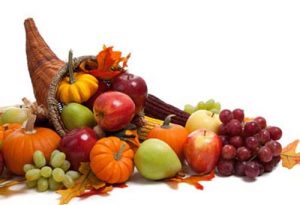
It never fails, the fall comes and many of my clients begin to struggle with their fruit and vegetable intake. The stone fruits and berries of the summer begin to go out of season and, for many, getting adequate produce in the diet becomes more challenging.
With cooler weather, comes the desire for warmer, heartier meals, as well. Many are afraid to transition from the salads of summer to the more energy-dense meals with starchier vegetables. But choosing foods that are satisfying are important for our health, our weight, and our mental health.
According to fruitseasons.com, here is a short list of fall fruits and vegetables: acorn and butternut squash, apples, cauliflower, celeriac, figs, grapes, mushrooms, parsnips, pears, pomegranate, pumpkin and sweet potatoes. Living in the central valley, we have the great privilege of access to so much of this produce. Once a fruit or vegetable is harvested, it begins to lose some of its nutrient value, so choosing local, in season produce is beneficial nutritionally! Incorporating this “in season” produce is a great piece to integrate into your dietary plan.
So don’t be afraid to incorporate starchier vegetables into your meals. For example, potatoes often get a bad reputation due to the starch/carbohydrate content but they provide a significant source of dietary fiber (4 grams in a medium baked potato), vitamin C (28% of your daily value), potassium (26% of your daily value) plus other nutrients like iron, magnesium and other B vitamins. Sweet potatoes are extremely high in vitamin A, specifically through the beta carotene content, as well.
Here are some tips as you transition into your fall foods:
- Give yourself additional prep time. This can be challenging, especially as school gets into gear and eventually the holiday season! This will taking planning – figure out what times work best for you. For example, when you’re waiting for dinner to cook, chop up some cauliflower or scrub your potatoes clean for the next day.
- Try new ideas and recipes. If you still love a great salad, it doesn’t have to be a traditional one with carrots, tomatoes and cucumber. One of my favorites was provided by Chef Roy Harland here in Fresno. Use butter leaf lettuce and top with pomegranate arils (the edible seeds), and goat cheese balls rolled in crushed pistachios. Top with a tasty vinaigrette and you’ve got a delicious salad!
- Low and slow. This is a great time to use your crock pot/slow cooker as some of the vegetables require a longer cooking time.
- Prep or cook more than you need for one meal. Chop up fresh mushrooms for a sandwich, salad or soup and sauté at another meal that week.
- Sign up for a CSA (stands for Community Supported Agriculture) box of produce. You get a box of in-season produce supplied by local farms in the area along with the bonus of recipe ideas that incorporate what you’ve been given. For local CSA programs go to: https://www.localharvest.org/csa/
- You can process the fruits and use them in baking, cooking, spreads….chop figs and incorporate them into muffins or used pureed pumpkin (even canned) to add to cream cheese for a delicious spread.
No matter how you approach it or what strategies you incorporate, remember that new habits get easier with consistency and time. Different fruits and vegetables have varying nutritional strengths – a healthy, well-balanced diet means lots of variety!
Enjoy the colors and tastes of the fall!
